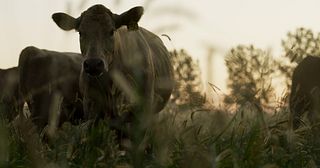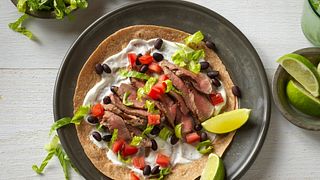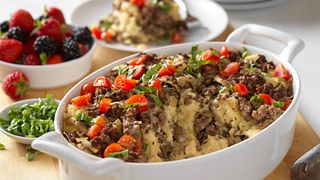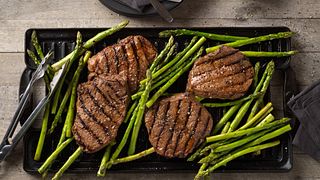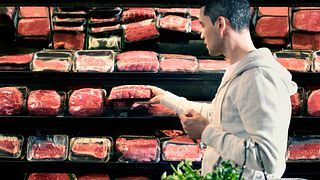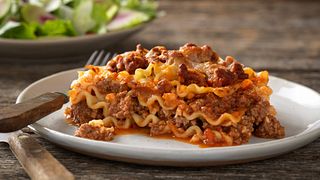FARMERS AND RANCHERS ACROSS THE COUNTRY CONTINUE TO BE STEWARDS OF THE LAND
september 18, 2023
Three families in three different parts of the country show how the beef community is committed to caring for their animals and the land.
Jorgensen Land & Cattle Partnership, Ideal, South Dakota
Over the course of the year, Jorgensen Land & Cattle will sell or lease more than 5250 bulls, making them the largest seedstock producer in the United States. The Jorgensen’s have developed a unique rotational grazing method that maintains the health and well-being of both the land and the cattle. By fitting the cattle with GPS collars, similar to a dog collar, the Jorgensen family can set virtual fences to more efficiently manage their cattle grazing. The technology allows virtual fences to be set and moved as often as needed, keeping the cattle away from land that needs to rest and directing them to other pastures that need to be grazed. This not only saves time by reducing man hours needed to put up miles of fencing, but it can also open up areas of pastureland where traditional fences could not easily be built. By moving the cattle more efficiently, the Jorgensen family can implement a grazing strategy that covers more land and produces healthier soil. Additionally, with access to more land, the cattle grazing can help remove many non-native, or invasive, grasses and weeds. The removal of these invasive plants also helps improve the overall health of the land and soil.
Huth Polled Herefords and S&H Livestock Enterprises, LLC, Oakfield, Wisconsin Over the past 60 years, Jerry Huth has established a reputation for his work in genetics and raising cattle which are productive and profitable in their environments. The Wisconsin farm has implemented state of the art performance and genetic testing to ensure their herd is well suited for the environment, and therefore more efficient and able to use fewer resources. In addition to their focus on genetics, Huth Polled Herefords and S&H Livestock Enterprises works with the Wisconsin Department of Natural Resources to employ a rotational grazing program. They graze their cattle on roughly 130 acres of public land, and in doing so, the cattle help manage and remove invasive plant species. The ultimate goal of the Huths and the Department of Natural Resources is to use the cattle to help manage the land, control overgrowth of undesirable plants and eventually return it to how it was hundreds of years ago.
Lamb Farms, Inc., Oakfield, New York Farmers and ranchers are known for their efforts to reuse as much as possible and waste as little as possible, and the Lamb and Veazy families are no different. On their farm in western New York, they work to recycle most, if not all, of their fertilizer. These efforts have allowed them to reduce their reliance on chemical fertilizers and instead utilize the available organic materials, maximizing the nutrients they put back onto the fields that grow crops to feed their cattle. Lamb Farms has also built an anerobic methane digester to separate and harvest the methane from their liquid manure collection, and export that methane as renewable natural gas products throughout their local communities.
Across the United States, there are countless stories of farmers and ranchers employing different practices - specific to their region, climate and landscape - to be more sustainable and preserve the land and their way of life for generations to come. For more information on these and many other stories alike, please visit our raising beef section at BeefItsWhatsForDinner.com.
About the Beef Checkoff
The Beef Checkoff Program was established as part of the 1985 Farm Bill. The checkoff assesses $1 per head on the sale of live domestic and imported cattle, in addition to a comparable assessment on imported beef and beef products. States may retain up to 50 cents on the dollar and forward the other 50 cents per head to the Cattlemen's Beef Promotion and Research Board, which administers the national checkoff program, subject to USDA approval.
About NCBA, a Contractor to the Beef Checkoff
The National Cattlemen’s Beef Association (NCBA) is a contractor to the Beef Checkoff Program. The Beef Checkoff Program is administered by the Cattlemen’s Beef Board, with oversight provided by the U.S. Department of Agriculture.
